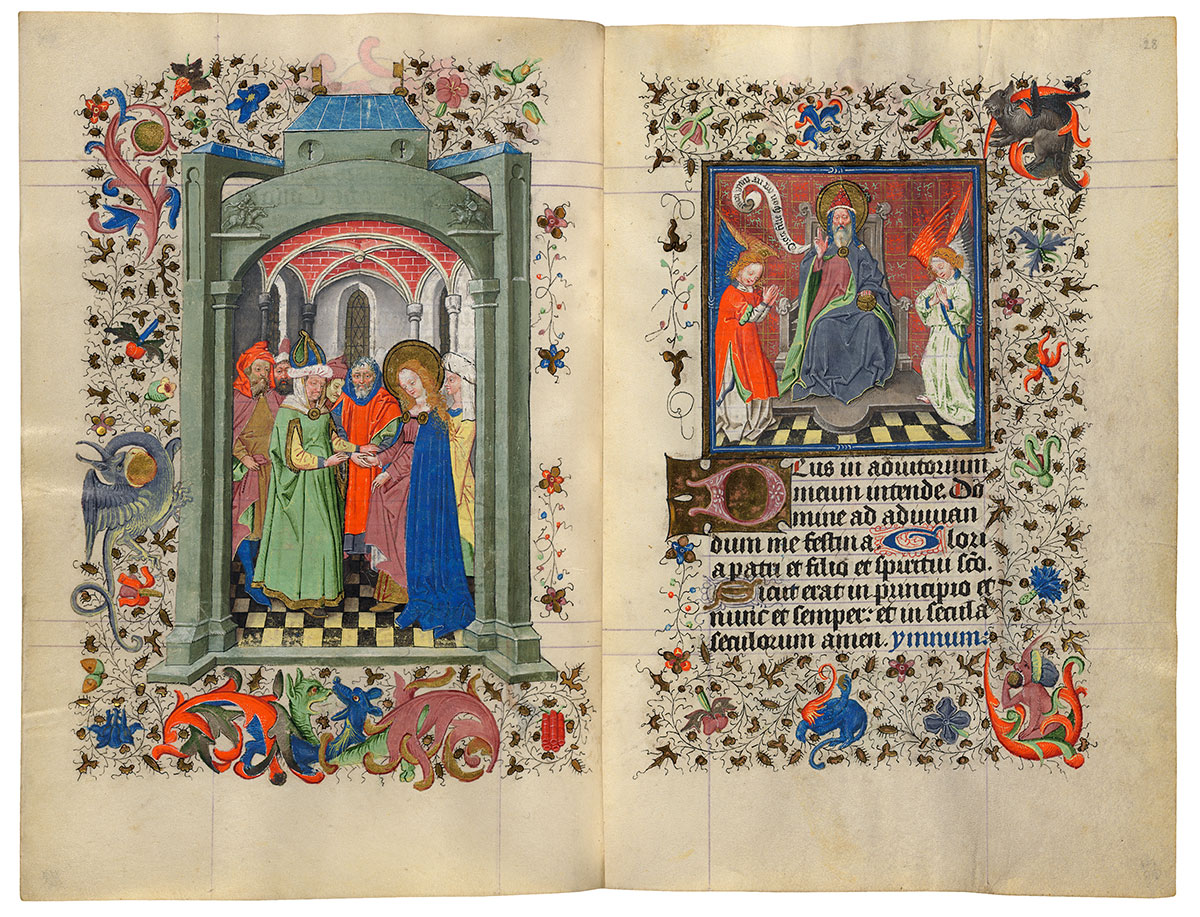MS M.917/945, ff. 27v–28r

Marriage of the Virgin
God Dispatching the Archangel Gabriel
Purchased on the Belle da Costa Greene Fund with the assistance of the Fellows and with special assistance of Mrs. Frederick B. Adams, Sr., Mrs. Robert Charles, Mr. Laurens M. Hamilton, The Heineman Foundation, Mrs. Donald F. Hyde, Mrs. Jacob M. Kaplan, Mrs. John Kean, Mr. Paul Mellon, Mr. and Mrs. Charles F. Morgan, Mr. Lessing J. Rosenwald, Mr. and Mrs. August H. Schilling, Mrs. Herbert N. Straus, Mrs. Landon K. Thorne, Mrs. Alan Valentine, Mr. and Mrs. Arnold Whitridge, and Miss Julia P. Wightman, 1970
Hours of the Virgin
The heart of every Book of Hours is the series of prayers called the Hours of the Virgin. Each Hour is composed of psalms plus hymns, biblical readings, and short phrases (antiphons, versicles, and responses). Ideally, these eight Hours were prayed throughout the course of the day:
| Matins and Lauds | at night or upon rising |
| Prime (first Hour) | at 6:00 a.m. |
| Terce (third Hour) | at 9:00 a.m. |
| Sext (sixth Hour) | at noon |
| Nones (ninth Hour) | at 3:00 p.m. |
| Vespers (evensong) | in the early evening |
| Compline | before retiring. |
The Hours of the Virgin date back to at least the ninth century. By the late twelfth century, the Hours appeared in Psalters, prayer books popular with laypeople. With a rising economy and the growth of the merchant class, the thirteenth century saw an increase in lay literacy. By the middle of the century, the Hours of the Virgin "spun off" from the Psalter and formed the core of the laypeople's prayer book, the Book of Hours.
The Virgin Mary is, of course, not mentioned in the numerous psalms of the Old Testament that comprise much of the Hours. Framing the psalms, however, are prayers that offer a mystical interpretation of the psalms and reveal the role played by the Virgin in mankind's salvation.
Image courtesy of Faksimile Verlag Luzern